This article explains how to turn Microphone access for apps On or Off in Windows 11.
If your Windows device has a built-in microphone or one attached, you can make Team or Skype calls, record sounds, and more. Many apps and services may request access to the device’s Microphone. However, Windows gives users control over which apps and how apps can use the Microphone.
Access to the Microphone can be granted or denied per app or for all Windows device apps.
Suppose you are worried about unknown apps using your device’s Microphone without knowing. In that case, Windows displays a microphone icon in the taskbar’s notification area so you know when the Microphone is in use.
Below are steps to allow or deny apps to the device’s Microphone in Windows 11.
Restrict or allow apps access to the Microphone
As mentioned, Windows allows users to control how apps request or access their device’s Microphone.
When your Microphone is in use, a microphone icon will be displayed in the taskbar’s notification area.
Here are some steps to restrict or allow an app access to the Microphone in Windows 11.
First, open the Windows Settings app.
You can do that by clicking on the Start menu and selecting Settings. Or press the keyboard shortcut (Windows key + I) to launch the Settings app.
When the Setting app opens, click the Privacy & security button on the left.

Select the Microphone tile on the right to expand it.
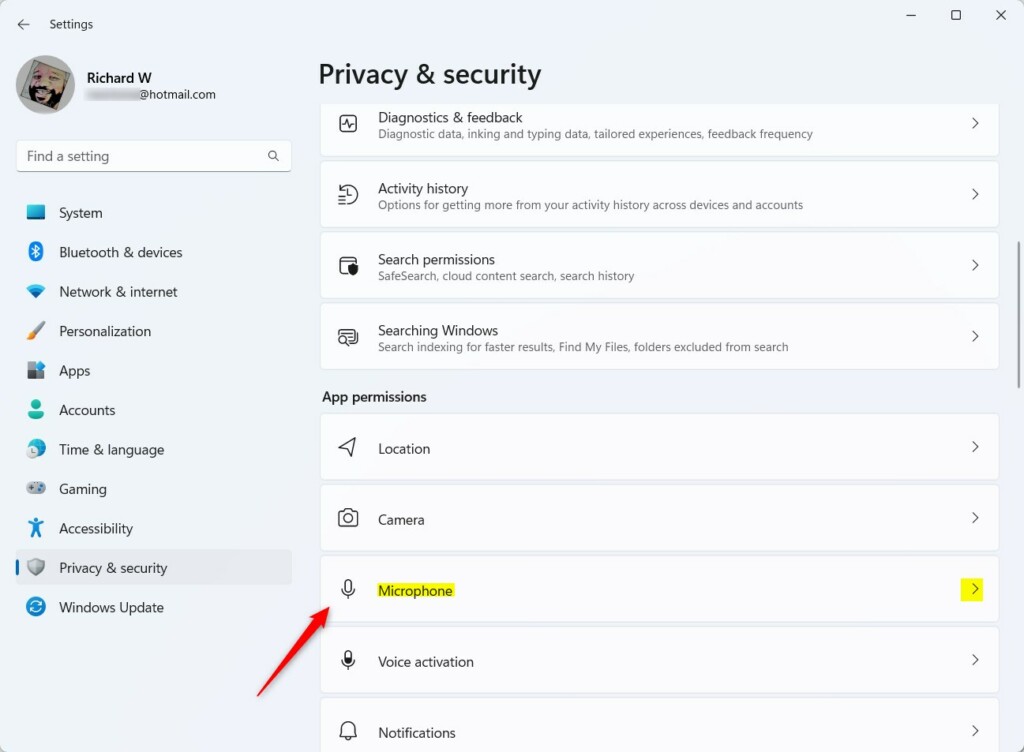
On the Privacy & security -> Microphone setting pane, select the “Microphone access” tile.
Then, toggle the switch button to the On position to enable microphone access on the device.
To disable microphone access, toggle the switch to the Off position.
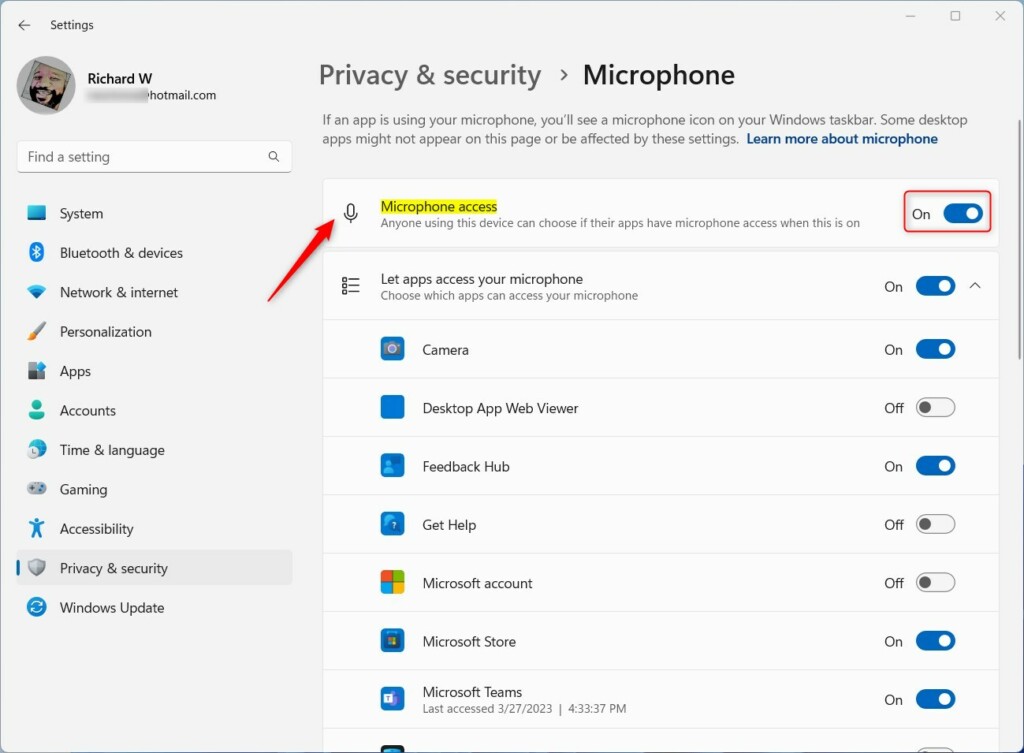
The steps above turn on or off microphone access for all apps.
To Selectively deny or allow microphone access for individual apps, ensure that Microphone access, Let apps access your Microphone and the individual app you wish to allow or deny.
Close the Settings app when you are done.
Allow or deny apps access to the Microphone via the Local Group Policy Editor
Controlling app access to the device’s Microphone can also be done using the Local Group Policy Editor.
To do that, first, open the Local Group Policy editor app.
In the left pane of Local Group Policy Editor, expand the tree: Computer Configuration -> Administrative Templates -> Windows Components -> App Privacy.
Computer Configuration -> Administrative Templates -> Windows Components -> App Privacy
In the App Privacy details pane on the right, double-click the policy setting “Let Windows app access the microphone” to open it.

On the setting window, choose one of the options below:
- Not Configured – Same as Disabled. Users can decide whether apps can access the Microphone in the Settings app.
- Enabled – When this policy is enabled, you can choose”
Force Allow“or”Force Deny“users changing app access settings to the Microphone in the Settings app. - Disabled – Users can decide whether apps can access the Microphone in the Settings app.
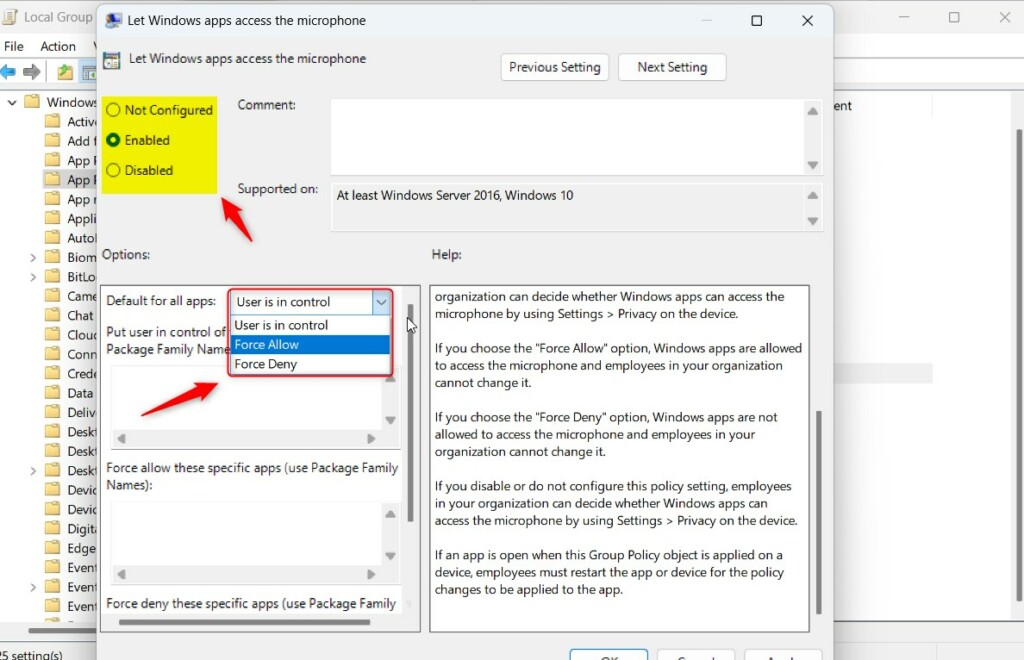
Select OK.
Close Local Group Policy Editor.
Enable or disable Microphone access for apps using the Registry Editor
Another way to turn microphone access for apps on or off is to use the Windows Registry editor.
To do that, open the Windows Registry editor, and navigate to the folder key below.
Use the HKEY_CURRENT_USER settings to apply this change to your desktop background.
HKEY_LOCAL_MACHINE settings will apply the change to all users on the system.
HKEY_LOCAL_MACHINE\SOFTWARE\Microsoft\Windows\CurrentVersion\CapabilityAccessManager\ConsentStore\microphone HKEY_CURRENT_USER\Software\Microsoft\Windows\CurrentVersion\CapabilityAccessManager\ConsentStore\microphone
If you don’t see the microphone folder key, right-click on the ConsentStore parent key, then create the subkey (Microphone) folder.

Right-click the microphone folder key’s right pane and select New -> String Value. Type a new item named Value.
Double-click the new item you created (Value) and update the Value data:
- To allow microphone access for all apps, type Allow.
- To deny microphone access for all apps, type Deny.
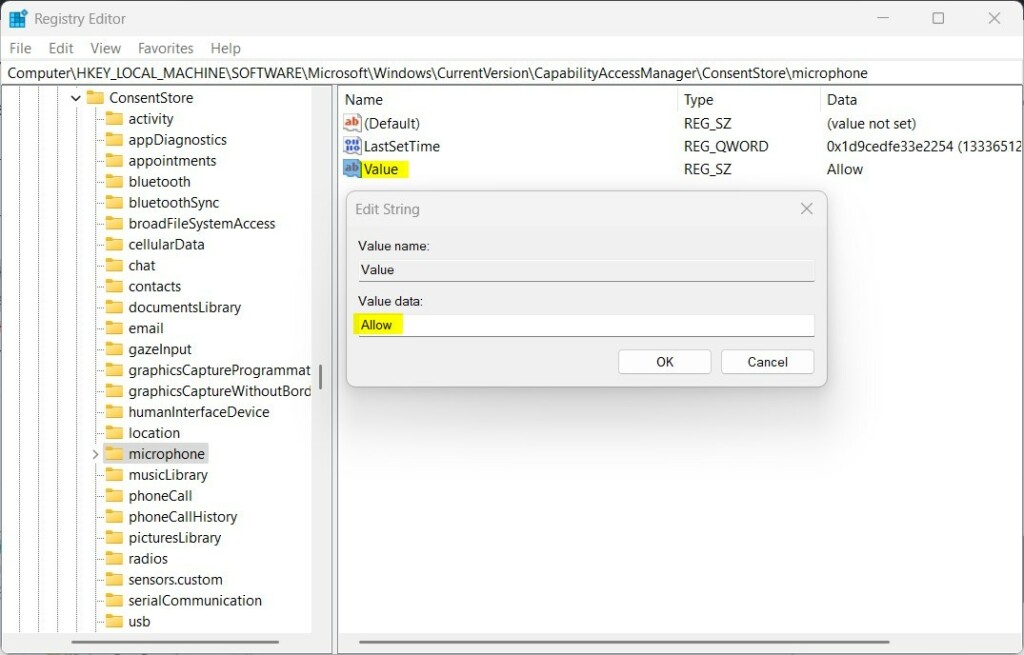
Turn Let desktop apps access your Microphone On or Off.
If you do not want to disable or enable all app access to the Microphone, use the “Let desktop apps access your microphone” option.
First, ensure that “Microphone access” and “Let apps access your microphone” are turned on.
Go to Start -> Settings -> Privacy & security -> Microphone and toggle the switch to On.
To turn it off, toggle the switch to Off.

Once turned on, you can selectively allow or deny apps’ access to your device’s Microphone.
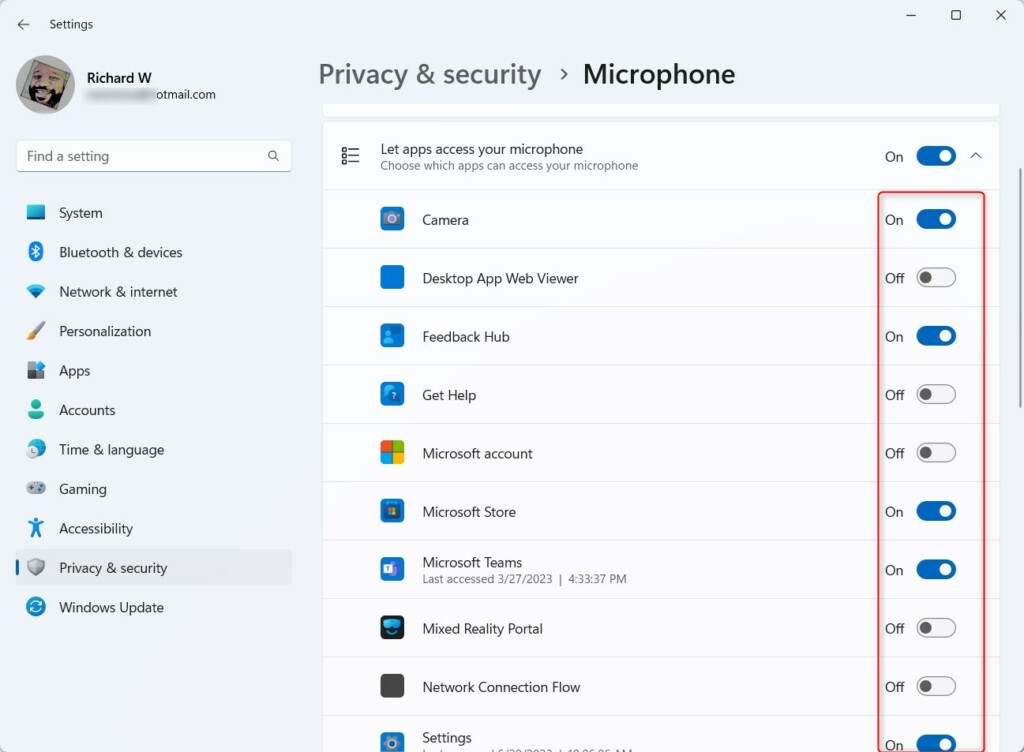
Turn Let apps access your Microphone using the Registry Editor
Another way to turn “Let apps access your microphone” is to use the Windows Registry Editor.
Note: You must first ensure that the option above that enables”Microphone access“is turned on before continuing below.
Use the HKEY_CURRENT_USER settings to apply this change to your desktop background.
HKEY_LOCAL_MACHINE settings will apply the change to all users on the system.
HKEY_LOCAL_MACHINE\Software\Microsoft\Windows\CurrentVersion\CapabilityAccessManager\ConsentStore\microphone\NonPackaged HKEY_CURRENT_USER\Software\Microsoft\Windows\CurrentVersion\CapabilityAccessManager\ConsentStore\microphone\NonPackaged
If you don’t see the NonPackaged folder key, right-click on the ConsentStore parent key, then create the subkey (NonPackaged) folder.
Right-click the NonPackaged folder key’s right pane and select New -> String Value. Type a new item named Value.
Double-click the new item you created (Value) and update the Value data:
- To allow apps to access your Microphone, type Allow.
- To deny apps accessing your Microphone, type Deny.
Once enabled, you can selectively allow or deny apps access to the Microphone at the registry location below.
HKEY_CURRENT_USER\Software\Microsoft\Windows\CurrentVersion\CapabilityAccessManager\ConsentStore\microphone
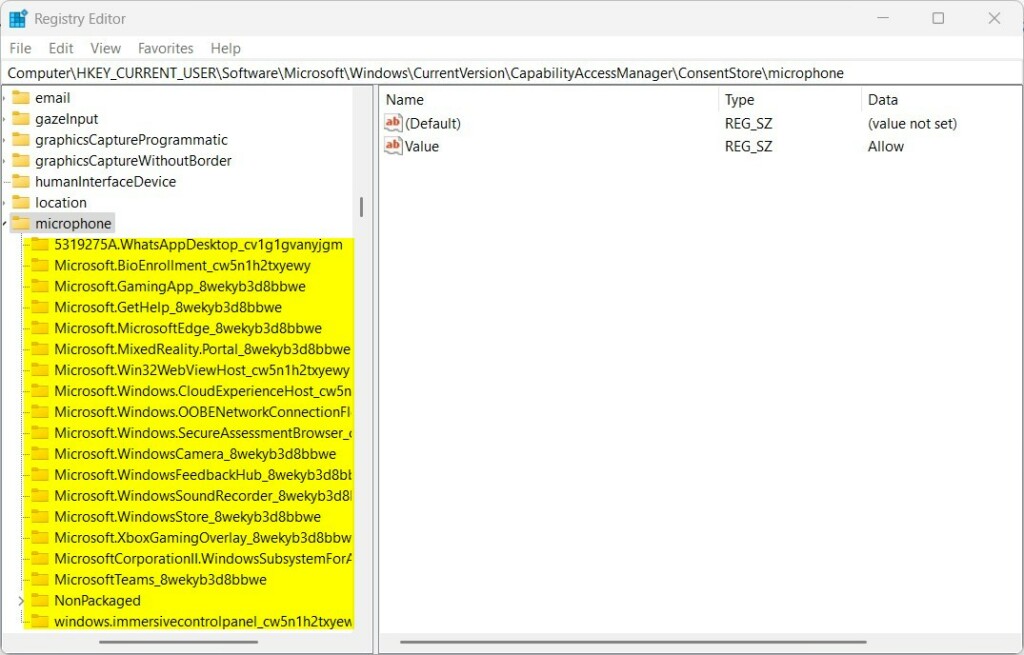
That should do it. Restart your computer to apply the changes.
Reference:
Conclusion:
- In this article, you’ve learned how to control app access to the Microphone on Windows 11, allowing you to safeguard your privacy and ensure only trusted apps can utilize the device’s microphone.
- Following the steps provided, you can conveniently manage and monitor which apps can access your Microphone, giving you peace of mind regarding potential privacy concerns.
- If you have any feedback, suggestions, or corrections regarding the information presented in this article, feel free to share them using the comments section below the post.

Leave a Reply